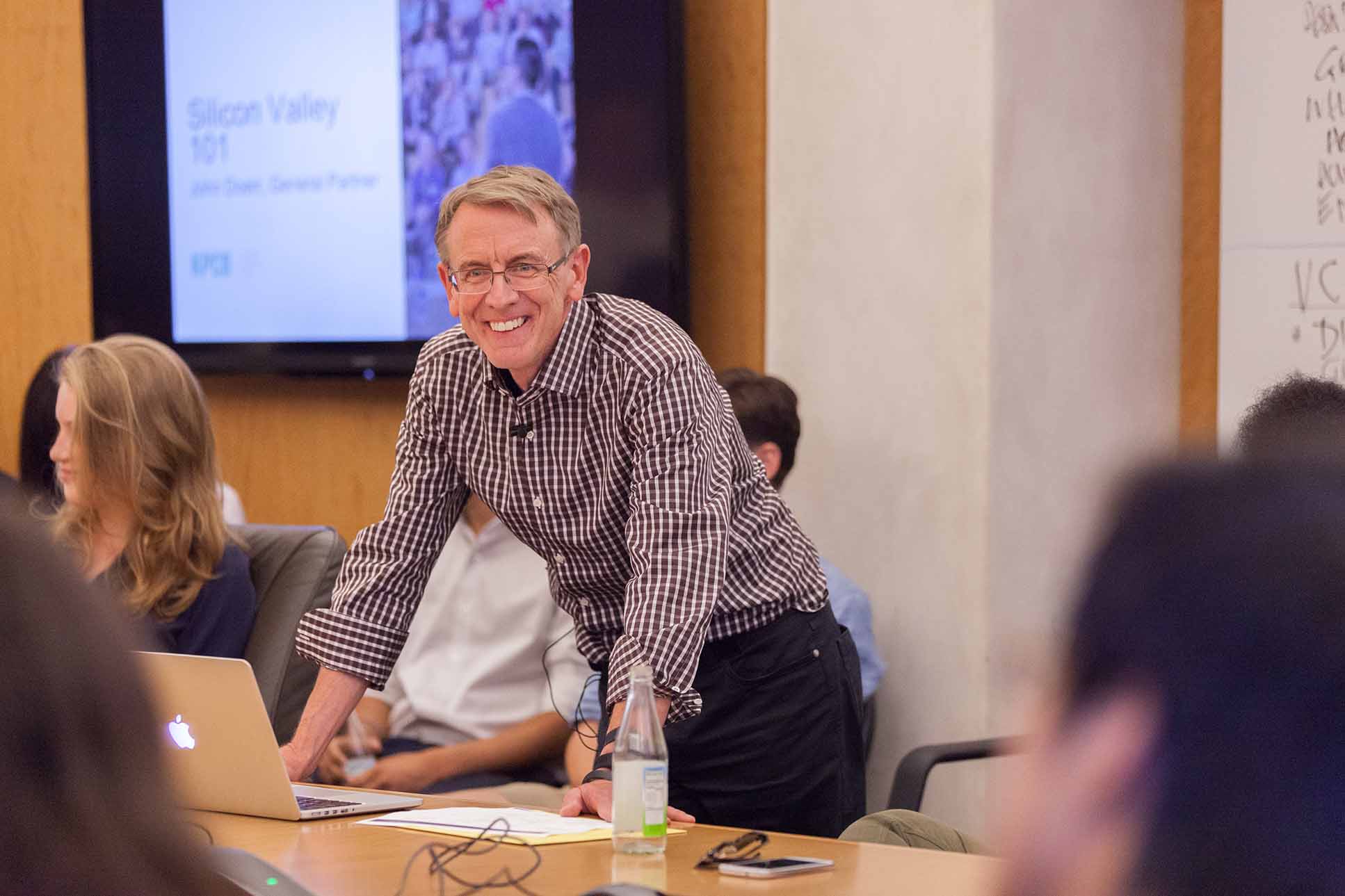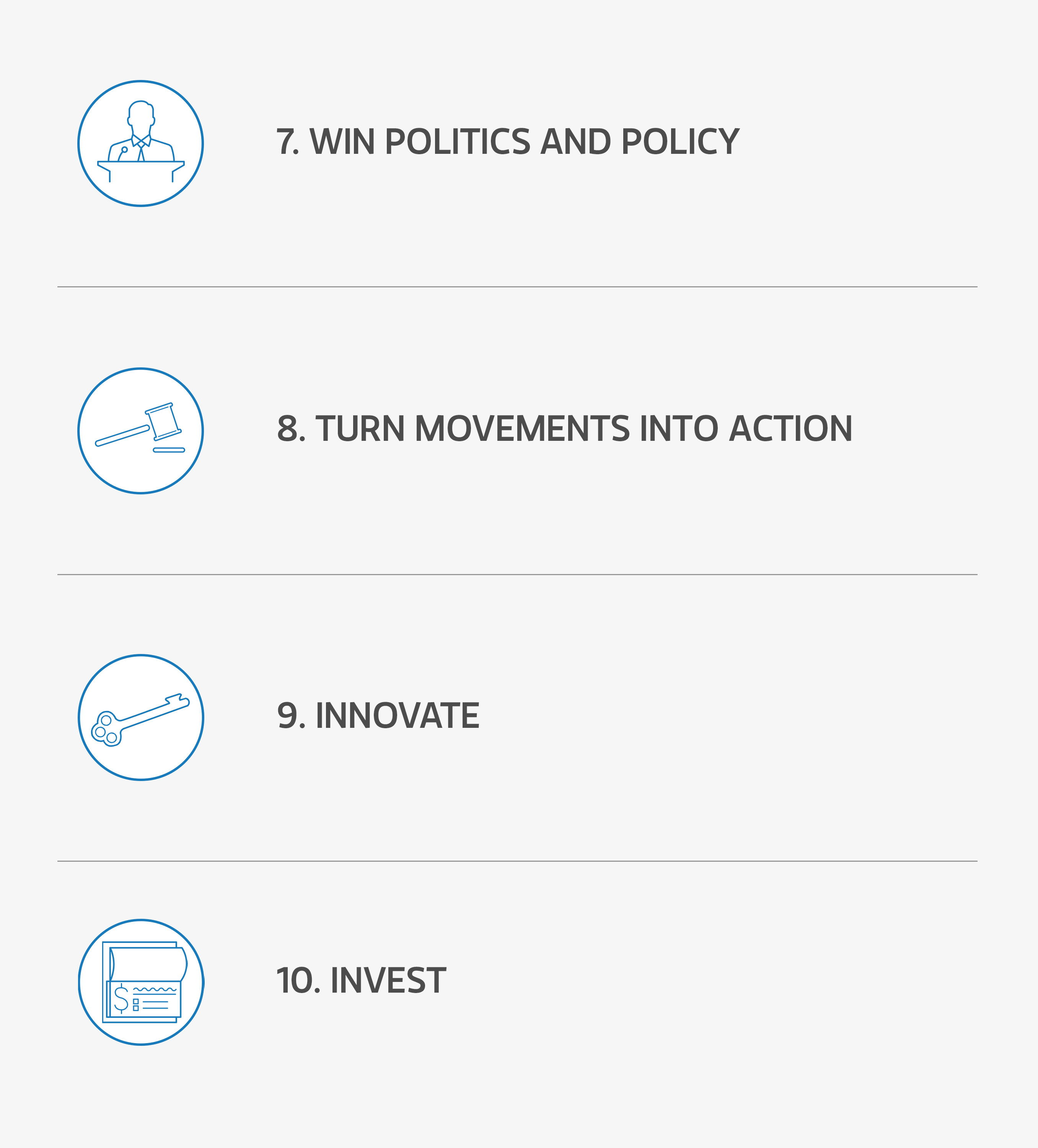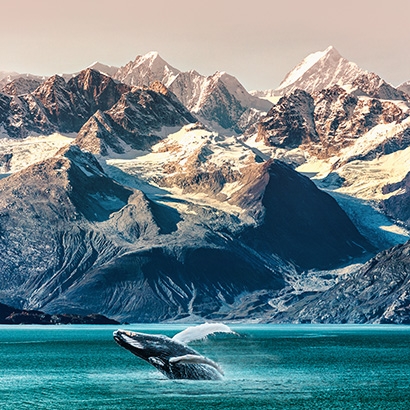John Doerr, chairman of venture capital firm Kleiner Perkins, shares his 10-point climate change action plan for investors and the next generation of climate leaders.
Scorching temperatures around the world and a barrage of floods in the U.S. are just some of the recent events underscoring a worsening climate-change crisis. Mitigating future catastrophes requires coordinated action from organizations and individuals across the private and public sectors—and the commitment of capital at scale. Matthew Slovik, Head of Global Sustainable Finance at Morgan Stanley, recently sat down with billionaire venture capitalist John Doerr to discuss what investors, executives and future climate leaders must do to help address climate change.
As chairman of Kleiner Perkins, Doerr is known for leading the venture firm’s early investments in technology companies, such as Google, Amazon, DoorDash and Slack. However, he has also devoted much of his career to galvanizing action around climate change. He discusses with Slovik his 10-step approach to help reduce greenhouse gas emissions and reach net-zero by 2050, outlined in his book, Speed & Scale: An Action Plan for Solving Our Climate Crisis Now. Doerr also shares why climate change is a once-in-a-generation investment opportunity and how future climate leaders can help. To educate these leaders, Doerr and his wife Ann recently announced a $1.1 billion gift to create the Stanford University Doerr School of Sustainability.

Matthew Slovik: You’re an engineer and visionary venture capitalist. How did you come to focus on climate change?
John Doerr: Like a lot of people, my journey began with Al Gore’s An Inconvenient Truth in 2006. I remember watching it with my family, and when it finished, my 15-year-old daughter, Mary, turned to me and asked what I was going to do to fix this problem my generation created.
I’m an engineer from Missouri, so I’m a sucker for solving big problems. My partners and I knew this needed to be our next focus. We networked like crazy, traveling the world from China to the Mojave Desert, from the Amazon rainforest to labs at MIT and Stanford, to learn all that we could. Over eight years and across three funds, we’ve committed roughly $1 billion to startup green ventures.
What’s become clear since then is that we’re not winning this race. We not only need greater ambition; we also need greater speed and scale. So, I wrote this book to galvanize people into action with an ambitious, science-based plan for cutting global emissions in half by 2030 and reaching net-zero by 2050.
Slovik: Can you sum up your 10-point plan and explain what’s in it for investors?
Doerr: Speed & Scale has six big objectives for emissions reduction and removal, plus four accelerants to get us there faster. The objectives are to:

In practice, to name just a few examples, this means:
- Rolling out fleets of zero-emissions vehicles
- Deploying vast amounts of solar, wind and safe nuclear energy
- Wasting less food
- Improving soil health
- Finding ways to clean up manufacturing processes
Together, these objectives represent a monumental effort to reinvent the worldwide economy. Frankly, I think it’s a bigger effort than the mobilization it took to win World War II, which is why my greatest fear is that we’re not going to make it in time. That’s where the accelerants come into the 10-point plan.
We need to:

Take Greta Thunberg as an example. I’m a huge fan of hers because she managed to make climate a top-two voting issue in seven of the 20 largest emitting regions in the world. We also need to innovate like crazy because innovation is critical to lowering the cost of carbon-free solutions. And investment is critical to innovation. We will need to invest more than $1.7 trillion each year for the next 20 years or more to reach our net-zero ambitions. I don’t think many investors realize that’s the biggest investment opportunity of our lifetimes.
Slovik: What about the role of philanthropy? I heard you mention on a podcast that just 2% of philanthropy is going to climate change. Is that enough to move the needle?
Doerr: No, it’s decidedly not enough. In fact, I think 20-30% of total philanthropy needs to be devoted to the climate agenda. My plan says that we need to increase donation dollars from $10 billion per year to $30 billion. The reason philanthropic dollars are an important part of this journey is because some critical environmental efforts, like climate justice and protecting lands, forests and oceans, don’t always generate financial returns but are still incredibly important pieces to this puzzle.
This need for more philanthropy was one of the reasons my wife and I were privileged to join others in committing $1.69 billion to create a new sustainability school at Stanford University earlier this year. We need more great climate schools just as we have lots of great medical schools, and we also need lots of great organizations with the funding to tackle this problem from every angle.
Slovik: Data from the Morgan Stanley Institute for Sustainable Investing shows climate change to be a top focus for investors, especially Millennials. Do you also see momentum and change at the leadership level among corporations, investment firms and governments?
Doerr: I do. I’m really inspired by the business leaders making commitments to get to net-zero by 2050. That said, much more is needed.
On our Speed & Scale website, anyone can evaluate global progress by tracking measurable “Key Results” for each of the plan’s objectives and accelerants. I’d love to say we’re on track for all the objectives, but we’re not. That’s why I wrote this book, so that global leaders and investors can identify one or two key results where their personal power, ability to move others to collective action or genius in investing and innovating can make a meaningful, measurable contribution to this problem.
Slovik: As you mentioned, you helped found the new Stanford Doerr School of Sustainability to train the next generation of climate leaders. Similarly, our Institute for Sustainable Investing seeks to develop tomorrow’s sustainability leaders through programs like our Sustainable Investing Challenge and Sustainable Investing Fellowship. What role do you think young people have in shaping climate solutions?
Doerr: I think that climate science will be the new computer science, meaning this is what young people today want to study—and for all the right reasons. The new Stanford school will support dozens of new faculty and thousands of new students, all unlocking and harnessing their energy and innovation to solve the climate crisis. This is crucial, because we will need system solutions in policy, finance, entrepreneurship and technology—as well as all generations working together, like my daughter wanted many years ago—to succeed.



